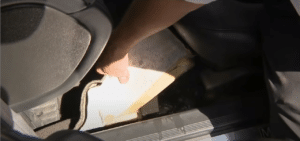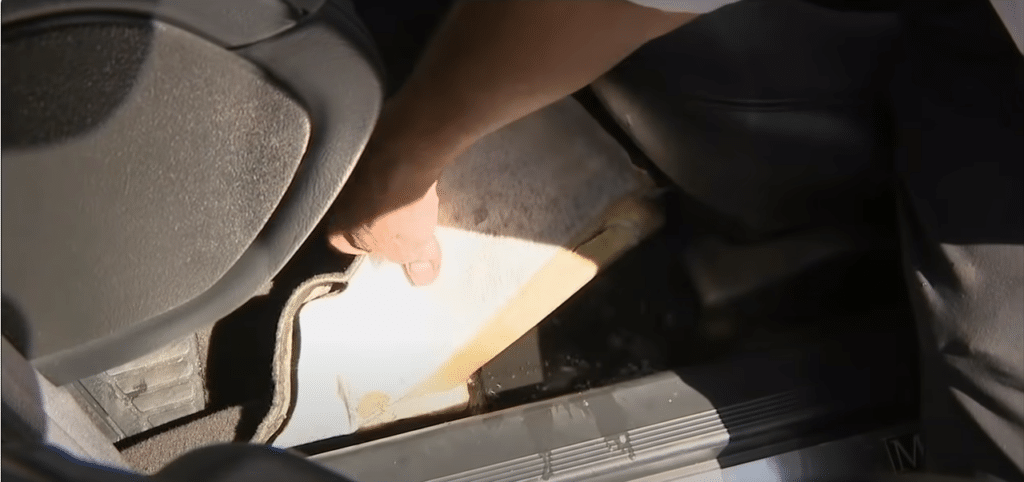Dealing with a flooded car after a hurricane or any severe flooding event can be challenging, but it’s essential to follow the right steps to ensure your safety and potentially salvage your vehicle. Here’s what to do when your car has been flooded cars:
- Safety First:
- Ensure your safety by staying away from floodwaters and any downed power lines.
- Do not attempt to start your car if it has been submerged or if there’s water in the engine bay, as this can cause further damage or even be dangerous.
- Document the Damage:
- Take photos or videos of the flooded car for insurance purposes. This documentation will be crucial when filing a claim.

- Contact Your Insurance Company:
- Report the flood damage to your insurance company as soon as possible. Be prepared to provide the necessary information and images of the damage.
- Remove Personal Belongings:
- If it’s safe to do so, remove any personal items from the car. This includes important documents, electronics, clothing, and anything else of value.
- Dry Out the Interior:
- Open all doors and windows to help the car dry out. You can use fans or dehumidifiers to speed up the process if possible.
- Remove the floor mats, carpeting, and seats if necessary to aid in drying.
- Inspect the Engine:
- If water has not entered the engine, you might be able to salvage it. Have a mechanic or a professional inspect the engine and its components.
- Do not attempt to start the engine until it has been checked by a professional.
- Change Fluids and Filters:
- Replace all fluids (oil, transmission fluid, brake fluid, coolant, etc.) as they may have been contaminated by floodwater.
- Change the air filter and fuel filter as well.
- Check Electrical Systems:
- Have the car’s electrical system inspected thoroughly. Floodwater can damage electrical components and lead to electrical problems.
- Ensure all lights, signals, and other electronics are working correctly.
- Tires and Brakes:
- Inspect the tires and brakes for any signs of damage or contamination. Floodwater can affect these components.
- Consult a Professional Mechanic:
- It’s highly recommended to have a qualified mechanic or automotive technician assess the vehicle’s overall condition, including the engine, transmission, and other critical systems.
- Consider Salvage or Total Loss:
- Depending on the extent of the damage and the cost of repairs, your insurance company may declare your car a total loss. In such cases, they will offer a settlement based on your policy.
Remember that flood-damaged vehicles can have hidden problems that may not manifest immediately. Taking the appropriate steps and consulting with professionals is crucial to assess the damage accurately and make informed decisions about repairing or replacing your flooded car.
Yes, restoration companies specializing in water damage and mold remediation can be valuable resources when dealing with a flooded vehicle that has developed mold. Here are the steps they typically follow to remove mold from a flooded car:
- Assessment: The restoration professionals will inspect the vehicle to assess the extent of mold growth and water damage. They’ll also check for structural damage and safety issues.
- Isolation: To prevent the spread of mold spores, the affected area or vehicle may be isolated, and containment measures put in place, including sealing off vents and openings.
- Safety Gear: Technicians will wear appropriate personal protective equipment (PPE), including masks, gloves, and suits, to protect themselves from exposure to mold spores.
- Removal of Contaminated Materials: Any materials in the car that cannot be adequately cleaned and salvaged will be removed and discarded. This can include carpeting, upholstery, insulation, and other porous materials that may harbor mold.
- Cleaning and Disinfecting: The restoration team will thoroughly clean and disinfect all non-porous surfaces in the vehicle to remove mold and inhibit its future growth. Specialized cleaning agents may be used.
- Drying: Ensuring the vehicle is completely dry is crucial to preventing mold recurrence. Industrial-strength dehumidifiers and fans may be used to speed up the drying process.
- HEPA Filtration: High-efficiency particulate air (HEPA) filtration systems may be employed to capture airborne mold spores and prevent their dispersion.
- Testing: After mold remediation, some restoration companies may perform air quality testing to ensure that the mold has been successfully removed and that the environment is safe.
- Restoration: Once the mold has been removed and the vehicle is deemed safe, any necessary repairs or replacements can be performed to restore the car to working condition. This may include replacing removed materials, electrical components, and any damaged parts.
- Preventative Measures: Restoration professionals may provide recommendations for preventing future mold growth in your vehicle. This can include regular cleaning, moisture control, and proper storage.
It’s essential to hire a reputable and certified restoration company with experience in dealing with mold in vehicles. They should follow industry best practices and safety protocols to ensure the effective removal of mold while minimizing health risks. Additionally, keep in mind that the cost of mold remediation can vary depending on the extent of the damage and the size of the affected area.
Mold can indeed cause significant damage to a vehicle, both to its structural components and to the health of its occupants. Mold thrives in damp, humid conditions and can grow rapidly on various surfaces, including upholstery, carpeting, insulation, and even within the HVAC system. Here are some of the potential consequences of mold infestation in a vehicle:
- Structural Damage: Mold can weaken and degrade materials over time. For example, it can deteriorate upholstery and carpeting, making them unsightly and potentially unsafe if they become weakened.
- Odor: Mold infestations often produce a musty, unpleasant odor that can be challenging to eliminate. This odor can be particularly persistent in a confined space like a vehicle.
- Health Concerns: Exposure to mold spores can pose health risks, especially for individuals with allergies, asthma, or compromised immune systems. Mold spores can become airborne and be inhaled, leading to respiratory issues, allergies, and other health problems.
- Electrical Problems: Mold can affect a vehicle’s electrical systems, causing short circuits and malfunctions. This can lead to issues with lights, sensors, and other electronic components.
- HVAC System Contamination: Mold can infiltrate the vehicle’s heating, ventilation, and air conditioning (HVAC) system, spreading spores throughout the cabin and potentially affecting air quality.
- Reduced Resale Value: A vehicle with a history of mold infestation may have reduced resale value, as prospective buyers may be concerned about lingering issues and health risks.
how to prevent more damage from : Flooded car
To prevent mold from devastating your vehicle, it’s crucial to address water damage and moisture issues promptly. After a flood or water intrusion event, take immediate action to dry out the vehicle and seek professional assistance if necessary. Thoroughly cleaning and disinfecting the interior can help prevent mold growth, but it’s vital to ensure the vehicle is completely dry to prevent future problems.
If you suspect mold growth in your vehicle, it’s advisable to consult with a professional mold remediation expert or a certified restoration company experienced in handling mold issues. They can assess the extent of the problem, provide guidance on remediation, and help restore the vehicle to a safe and functional condition.
Driving a vehicle affected by mold is generally not recommended, especially if the mold problem is severe or has compromised critical components like the HVAC system or electrical wiring. There are several reasons for this:
- Health Risks: Mold spores can become airborne, and inhaling them can pose health risks, particularly for individuals with allergies, asthma, or respiratory conditions. Driving in a mold-infested vehicle can expose you to these spores, potentially exacerbating health issues.
- Reduced Visibility: Mold growth on windows, mirrors, and windshield can obstruct your visibility, making it unsafe to drive.
- Odor: Mold infestations often produce a musty, unpleasant odor that can be distracting and make driving uncomfortable.
- Potential Mechanical Issues: Mold can affect the vehicle’s electrical systems and other components. Driving a car with compromised electronics can be unsafe, as it may lead to unexpected malfunctions or even accidents.
- Contamination of HVAC System: If mold has infiltrated the heating, ventilation, and air conditioning (HVAC) system, turning it on can spread mold spores throughout the cabin, affecting air quality and potentially causing health issues.
- Legal and Safety Concerns: Depending on your jurisdiction, driving a vehicle in a hazardous condition may be against the law and could result in fines or legal consequences if you are involved in an accident.
If you suspect that your flooded vehicle has a mold problem, it’s essential to address it before driving. Here are some steps to consider:
- Assessment: Have a professional inspect the vehicle to assess the extent of the mold problem and any potential safety issues.
- Mold Remediation: If mold is present, consult with a certified mold remediation expert or a qualified restoration company to have the mold removed safely and effectively.
- Clean and Disinfect: After mold removal, thoroughly clean and disinfect the vehicle’s interior to ensure that all traces of mold are eliminated.
- Check Critical Systems: Have the vehicle’s critical systems, such as the electrical system and HVAC, inspected to ensure they are functioning correctly and safely.
- Ensure Adequate Ventilation: Ventilate the vehicle well to help remove any lingering odors and ensure that it is safe to occupy.
Only after these steps have been completed, and the vehicle has been deemed safe and free from mold, should you consider driving it again. Your safety and the safety of others on the road should be the top priority.
Water Damage Form

